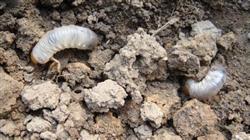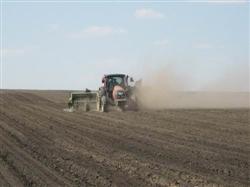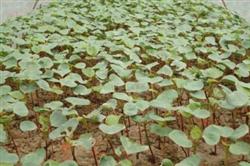Which spring corn fertilization scheme is suitable for you?

There are two types of fertilization schemes for planting spring corn in northern China this year. The first scheme is to adopt compound fertilizer with appropriate proportion of nitrogen, phosphorus and potassium and urea, diammonium phosphate and potassium chloride, through the "old third stage" fertilizer application method, that is, compound fertilizer is applied deeply as base fertilizer, diammonium phosphate as seed fertilizer is shallowly applied under the seed and separated, and urea is used as topdressing at the jointing stage of corn. The advantage of the "old three-stage" fertilizer application method is that it can steadily obtain high yield in different years, with a general yield level of 600 to 800 kg per mu, high safety factor of fertilization and high utilization rate. However, the disadvantage of option 1 is that it is labor-intensive and farmers are increasingly unwilling to accept it. In recent years, great changes have taken place in the fertilization methods in the main spring maize producing areas in the north. With the modern development of agricultural production, there has been a trend of simplification in cultivation and soil tillage. Although agricultural science and technology promotion has been advocating for many years that nitrogen-based fertilizers should be applied deeply, nitrogen topdressing should be applied in stages, and phosphorus-based fertilizers and seed fertilizers should be applied at different levels, some new simple fertilization schemes are still developing rapidly, just like plan 2. The "one-shot" or "one-time" application method of high-nitrogen compound fertilizer is adopted. The so-called "one-time application" means that the fertilizer needed for the whole growth period of spring corn is applied as base fertilizer at one time, and then there will be no more fertilization. The advantage of this fertilization method is that it is simple and labor-saving, but its effect varies from place to place and time to time. According to a survey in the northeast chernozem region, the use of one-time fertilization on spring corn accounted for about 60% of the increase, 28% of the flat, and 10% of the reduced yield. The survey results used in alluvial soil areas show that the probability of increasing production is reduced and the possibility of reducing yield is increased. These investigations show that the effect of the fertilizer application method is not stable. In addition, the safety factor of the fertilizer application method of the second scheme is lower, and there are more fertilization accidents reflected by farmers. The suitability of "one-time application" needs to be understood, so it is necessary to analyze the suitability of this fertilization method. First of all, it depends on the grower's requirements for the yield target and the index of safe and stable yield. even in the normal year and under the condition of putting the same nutrients, one-time fertilization can not be better than stage-by-stage fertilization, which shows that the yield level of spring corn per mu generally does not exceed 500-600 kg. Because the effect of one-time fertilization is controlled by many factors, such as fertilizer composition, quality, fertilization location, sowing time, temperature, hydrothermal conditions and so on. In some cases, it is not suitable to use "one bombardment" or "one shot". Considering comprehensively, the suitable conditions for one-time fertilization are mainly in the arid and rainless areas in the west, but not in many places. For example, irrigated land in North China will cause corn to squat seedlings in the early stage and lose fertilizer in the later stage, and it is difficult to guarantee the yield; or if there is a lot of annual rainfall in Central and South China, if chemical fertilizer is applied at once, it will grow too much in the early stage. de-fertilizing during grain filling, resulting in a reduction in yield.
- Prev

Problems needing attention after sowing of spring soybean
After sowing spring soybeans, it is the spring rain season, so it is necessary to prevent excessive soil moisture and poor permeability, affecting seedling emergence and even causing rotten seeds. The practical experience is that planting spring soybean seeds in autumn and sowing in the following spring by "autumn propagation" can effectively prevent the rotten seeds after sowing and improve the germination rate and seedling emergence rate.
- Next

Prevention of "five pests" and "three seedlings" in cotton seedbed
The common problems in cotton nutrition bowl seedling bed are drought, stain, disease, fertilizer, medicine and frozen seedling, burning seedling and line seedling. The preventive measures are as follows: the water content of the soil should be moderate. The nutrition bowl seedling bed should be selected in the place of drainage and irrigation, and the water content of the bowl soil should be dispersed as soon as it falls to the ground by hand. ...
Related
- The first cup of black tea in spring, the flavor and history of tea gardens in Kenya, Africa
- The computer can not only choose potatoes, but also grow tea rice. AI will grow winter oolong tea champion.
- It is not only the inflated tea bitten by insects, but also engraved with the four seasons tea in Beipu.
- The Oriental Beauty Tea Festival in Zhuxian County takes the stage at the weekend to experience the plus-size feast of oil tea.
- & quot; Oriental Beauty Tea & Exploration of Emei in Hsinchu, the hometown of quot;
- The new variety of strawberry "Tainong 1" dessert is the first choice with mellow aroma. Crimson gorgeous
- History of Tea in Taiwan: from Wild Inner Mountain to Export Tea Garden
- Two types of Taiwan Oriental Beauty Black Tea won the British three-Star Award for Childhood Tea Xiang Zhang Jiaqi changed from pilot to champion tea maker.
- Banana species and varieties: the planting history of Taiwan Xianren banana and dwarf banana is long, is banana disease resistant?
- Coffee planting Technology: Qianjie Coffee from Seedling to harvesting

